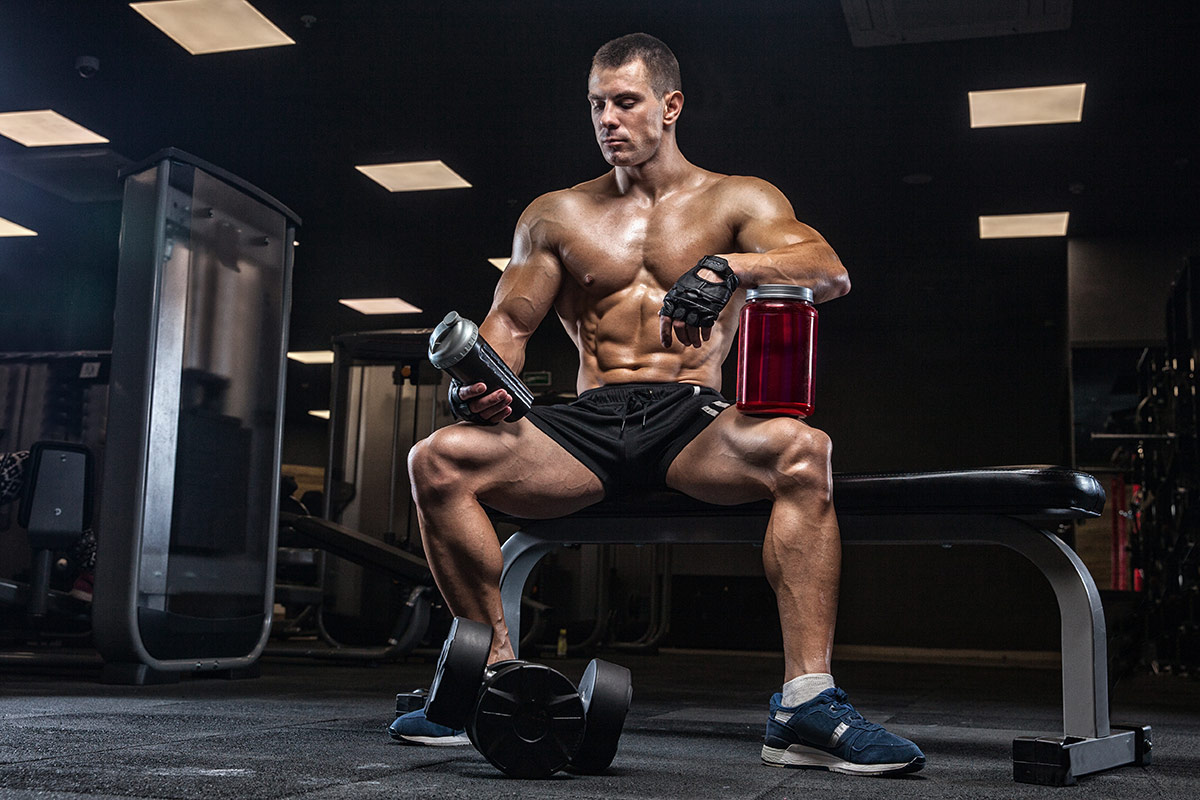Although an increase in muscle strength is always associated with an increase in muscle volume, doing exercises with high weights and low repetitions uses a specific type of muscle fibers – the fastest fibers that respond well to hypertrophy.
As a result, training with heavy multi-joint exercises, performed in the 3-5 rep range, is best suited for increasing muscle volume – the principle behind most bodybuilding programs is built on this principle. How to train for volume correctly?
Workouts for strength and muscle volume

Hypertrophy is the medical term for an enlargement of an organ or a certain type of tissue. In sports, we are talking about muscle hypertrophy – or the process of recruiting muscles. In contrast, atrophy is characterized by a decrease in tissue mass and volume.
In fact, hypertrophy is associated with the ability of muscle tissue to adapt to stress – which increases both strength and capillarization. Different types of training affect the body’s ability to trigger muscle hypertrophy in different ways.
Sarcoplasmic hypertrophy (and increased muscle volume) is achieved with short strength loads, while myofibrillar (and increased endurance) is achieved with prolonged cardio. That is, if you want to build muscle, you should not exhaust yourself with long, low-intensity workouts.
How do muscles grow?
The processes of increasing the number of muscle fibers are not typical for an adult – training and sports activities affect only the volume of muscle fibers and the surrounding nutrient fluid. Which, in turn, contains not only vitamins and minerals, but also glycogen – a product of carbohydrate processing.
In response to strength training, the body increases the reserves of energy and nutrients in the muscles, which allows you to train longer and more efficiently, as well as heal microdamages and build new connective tissue.
In fact, to increase muscle volume, additional carbohydrate nutrition is needed – and the daily diet should contain 15-20% more than the norm. Plus, the body needs protein and an optimal balance of hormones to recover (high testosterone and low cortisol for men).
How to train properly?

Heavy-duty, medium-rep training uses fast medium-type muscle fibers (Type IIB) that respond to glycogen. Together with increased circulation and sufficient nutrients in the blood, this is beneficial for increasing the volume of the sarcoplasm.
At the same time, training for hypertrophy implies regular progress – it can be expressed both in increasing working weights, and in increasing the number of repetitions or replacing exercises with more complex ones. Actually, muscle growth is the body’s response to an ever-increasing load.
Sets and reps
If you want to increase muscle volume through training, you need to perform from 6 to 12 repetitions of the exercises – with a working working weight in the range of 70-85% of 1MP ³ . This figure is calculated based on the maximum weight with which you can perform only one repetition of the exercise.
On the other hand, doing exercises with a weight of 85% of 1 MP and in the amount of 3-5 repetitions activates the nervous system and increases hormone production – especially when using multi-joint exercises with a barbell (deadlift, squats, bench press, standing press and deadlift in tilt).
Nutrition to increase muscle volume

While research does not support the benefits of post-workout whey protein intake (in the end, what matters is total protein intake per day at intervals of 3-4 hours – which can be achieved with a regular diet), carbohydrates still play an important role after exercise.
Taking a maltodextrin-based gainer can stop muscle catabolism and lower cortisol levels – which will have a positive effect on recovery. On the other hand, there is debate about the effect of the carbohydrate window on testosterone levels.



